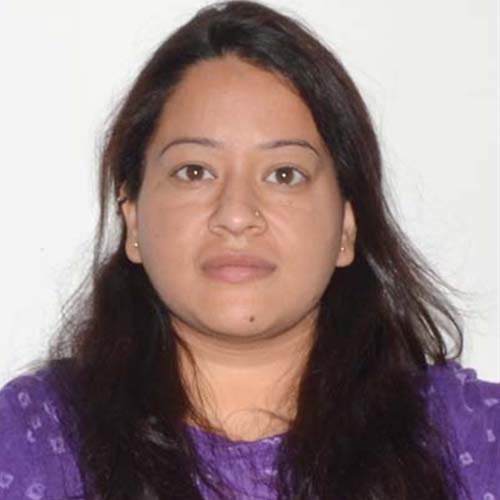
Designation : U.G.C. Senior Research Fellow
Brief Background :
I have qualified CSIR-UGC J.R.F, GATE, and ARS-NET. I have also worked at CSIR-IHBT Palampur on “Diversity analysis and phylogenetic relatedness of cyanobacteriafrom thermal springs of the North Western Himalayas”. Presently, I am doing Ph. D. at Agharkar Research Institute.
Contact Details :
ranashiwali@gmail.com, shiwalirana@aripune.org
- B.Sc. (Hons.) Biotechnology
-
M.Sc. Microbiology
- Tech. Energy Technology (Renewable energy)
My researchmainly revolves around studying “The genus Fusarium”with the prime focus on its taxonomy, phylogenetic, systematics and evolution, and its exploration for the production of an extremely interesting compound called “Beauvericin”. This compound is very potent possessingmultiple bioactivities such as antimicrobial, antiviral, insecticidal, anticancerous, and many more.
Other than this, I have a special interest in the discovery of novel fungal lineages particularly from the North Western Himalayan region. The discovery of the novel fungi is important because fungi are very important in maintaining the biogeochemical cycles, ecosystems function and are being used in many aspects of human life from medicine to industry. Different estimates indicate that less than 2% of fungal species have been discoveredon the planet.In this era of anthropogenic extinction, there is an urgent need to document them before they get extinct.
My approach to biodiversity studies merges morphology-based and molecular methods to study the origin, evolution and current status of fungal biodiversity. I have two new genus, and three new species to my credit till date and the search is still on.
1. Rana S, Baghela A and Singh SK (2017) Morphology and phylogeny of Microdochiumfisheri, a new record from India. Plant Pathology and Quarantine 7(2): 191–200
- Rana S, Singh PN, Gaikwad SB and Singh SK (2017) Morphology, phylogeny and ex situ conservation of Arthriniumrasikravindrae (Apiosporaceae: Xylariales): a new record from India. Kavaka 49: 1–5
- Rana S and Singh SK in Phookamsak R et al. (2019) Fungal diversity notes 929–1035: taxonomic and phylogenetic contributions on genera and species of fungi. Fungal Diversity. 10.1007/s13225-019-00421-w:1-273
- Rana S, Singh SK and Singh PN (2019) Morphology and phylogeny of a new species of Trichomerium from North‑Western Himalayas, India. Indian Phytopathology 72: 427.
- Rana S, Singh SK and Singh PN (2019) Strelitzianasarbhoyi sp. nov. (Strelitzianaceae, Chaetothyriales), from NorthWestern Himalayas, India, described based on morphology and molecular phylogeny.Phytotaxa 427 (1): 51–59.
6.Rana S and Singh SK (2019)Kamaliaindica, a new genus and species belonging to Diaporthales (Ascomycota, Fungi) described based on morphology and molecular phylogeny.Phytotaxa 425 (4): 233–243.
- Rana Sand Singh SK in Hyde KD et al. (2020)Fungal diversity notes 1151–1276: taxonomic and phylogenetic contributions on genera and species of fungal taxa. Fungal Diversity 100: 5–277.
8.D’Souza MA,Rana S and Singh SK (2019) Morphology and Phylogeny of root –endophytic fungus Periconiaigniaria. Studies in Fungi 4(1):274-281.
9.Khattar JIS,Kaur S,Kaushal S, Singh Y, Singh DP,Rana S and Gulati A(2015) Hyperproduction of Phycobiliproteins by the cyanobacteriumAnabaena fertilissima PUPCCC 410.5 under optimized culture conditions.Algal research 12:463-469.










